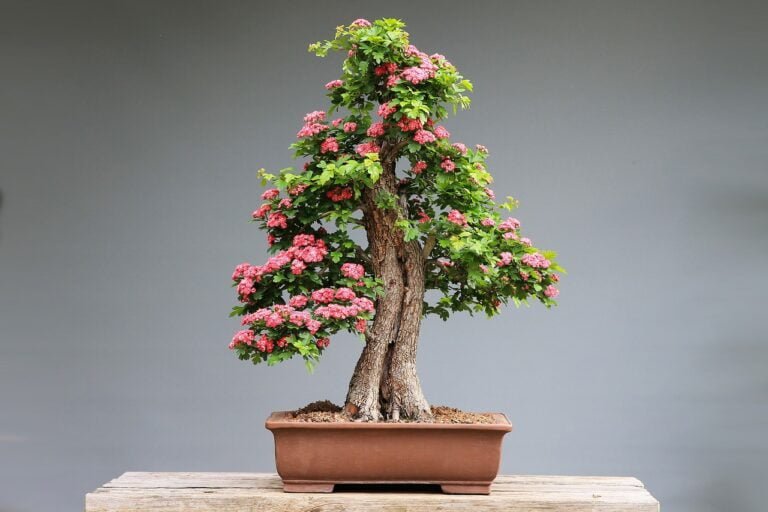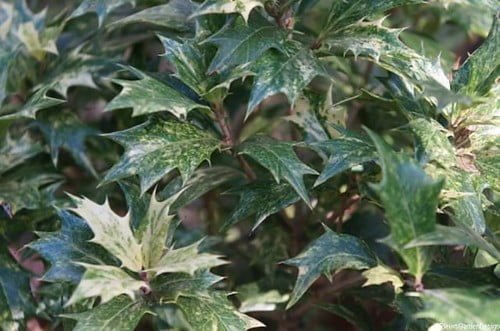Essential Tips for Caring for Established Trees: Pruning, Shaping, Mulching and Fertilizing
Are you looking to take better care of your established trees? Learn essential tips for pruning, shaping, mulching, and fertilizing in this informative article. Discover the proper techniques for tree pruning and shaping, as well as the benefits of mulching for tree health. Find out how to select the right mulch and apply fertilizer effectively. Avoid common mistakes and ensure your trees thrive with these practical tips for caring for established trees.
Understanding Tree Pruning Techniques
To effectively care for your established trees, it is essential to understand the various pruning techniques that can be used. Tree pruning techniques are crucial for maintaining the health and appearance of your trees. One common method is called crown thinning, which involves selectively removing branches to increase light penetration and airflow. This helps prevent diseases and promotes healthy growth. Another technique is crown raising, which involves removing lower branches to provide clearance for pedestrians or vehicles. Crown reduction is another method used to reduce the height or spread of a tree, often done to prevent interference with power lines or buildings. Lastly, there is tree shaping, which involves pruning to create specific shapes or forms, such as topiaries or espaliers. Understanding these pruning techniques will allow you to effectively care for your trees and ensure their long-term health and beauty.
Proper Shaping Methods for Established Trees
Regularly shaping established trees is essential for maintaining their health and promoting optimal growth and appearance. When it comes to pruning techniques and tree shaping methods, there are a few key principles to keep in mind. First, it's important to identify the main branches or leaders and ensure they have enough space to grow without interference from other branches. This will help maintain the tree's natural shape and prevent overcrowding. Additionally, it's important to remove any dead or diseased branches, as they can negatively impact the overall health of the tree. When shaping the tree, make sure to cut just outside the branch collar, which is the swollen area where the branch meets the trunk. This will help the tree heal properly and minimize the risk of disease or infection. By following these proper shaping methods, you can ensure your established trees remain healthy and visually appealing.
The Benefits of Mulching for Tree Health
Mulching provides numerous benefits for the health of your trees. Not only does it enhance the appearance of your landscape, but it also plays a vital role in maintaining the overall health and vigor of your trees. One major benefit of mulching is its ability to retain moisture in the soil, preventing it from drying out quickly. This is especially important during hot and dry periods, as it helps to keep the roots hydrated and reduces stress on the tree. Additionally, mulch acts as a barrier, protecting the roots from extreme temperatures and fluctuations in the weather. It also helps to suppress weed growth, reducing competition for nutrients and water. By mulching your trees, you are providing them with a favorable environment for growth, ensuring their long-term health and vitality.
Selecting the Right Mulch for Your Trees
Choose the appropriate mulch for your trees to ensure optimal growth and health. Selecting the right mulch is crucial as it provides several benefits to your trees, such as conserving moisture, suppressing weeds, and improving soil quality. When choosing mulch, opt for organic options like wood chips, shredded bark, or compost. These mulches break down slowly, releasing nutrients into the soil over time. Avoid using mulch made from rubber or rocks, as they don't provide the same benefits. Once you've selected the appropriate mulch, it's important to properly apply it. Start by clearing any existing weeds or grass around the base of the tree. Then, spread a layer of mulch around the tree, making sure to leave a gap around the trunk to prevent moisture buildup. Aim for a mulch depth of 2-4 inches, evenly distributed. Remember to replenish the mulch annually to maintain its effectiveness. By selecting the right mulch and applying it properly, you'll give your trees the best chance for healthy growth and longevity.
Essential Fertilization Tips for Established Trees
To ensure optimal growth and health for your established trees, it is important to provide them with essential fertilization. The soil composition plays a crucial role in determining the type and amount of fertilizer needed. Before applying any fertilizer, it is recommended to conduct a soil test to assess the nutrient levels and pH balance. This will help you determine the specific needs of your trees. When it comes to choosing fertilizers, organic options are highly recommended. Organic fertilizers are derived from natural sources and provide a slow release of nutrients, ensuring a steady and long-lasting supply. They also improve the soil structure and promote beneficial microbial activity. Examples of organic fertilizers include compost, well-rotted manure, and bone meal. Remember to follow the instructions on the fertilizer packaging and apply it evenly around the drip line of the tree. Regular fertilization will help your established trees thrive and remain healthy for years to come.
Timing and Frequency of Tree Fertilization
When determining the timing and frequency of fertilizing your established trees, it is important to consider the specific nutrient needs of each tree. Tree fertilization timing depends on factors such as tree species, soil conditions, and climate. In general, it is recommended to fertilize trees during their active growth period, which is typically in the spring and early summer. This allows the trees to utilize the nutrients effectively. As for frequency, it is best to fertilize established trees every one to three years. However, it is crucial to monitor the tree's health and growth to determine if additional fertilization is necessary. When choosing fertilizers, you have the option of organic or synthetic. Organic fertilizers provide slow-release nutrients and improve soil health, while synthetic fertilizers deliver nutrients more rapidly. Consider the specific needs of your trees and consult with a professional if needed to determine the best fertilizer for your situation.
The Importance of Soil Testing for Tree Care
To ensure proper care for your established trees, it is crucial to prioritize soil testing for accurate nutrient assessment and subsequent treatment. Soil testing importance cannot be understated, as it allows you to understand the specific needs of your trees and provide them with the necessary nutrients. By conducting a soil test, you can determine the pH level, nutrient deficiencies, and excesses in the soil. This information is vital for making informed decisions about fertilization and soil amendments. Nutrient analysis helps you tailor your fertilization program to meet the specific requirements of your trees, promoting their health and growth. It also prevents over or under-fertilization, which can lead to nutrient imbalances and potential damage. Regular soil testing is a proactive approach to tree care, ensuring that your trees receive the right nutrients at the right time.
Identifying Nutrient Deficiencies in Established Trees
You should regularly assess your established trees for nutrient deficiencies in order to ensure their health and vitality. Identifying common diseases and preventing pest infestations are crucial in maintaining the overall well-being of your trees. Nutrient deficiencies can manifest in various ways, such as discolored or yellowing leaves, stunted growth, and weakened branches. To identify these deficiencies, thoroughly examine the foliage, looking for any signs of discoloration or abnormal growth patterns. Additionally, pay attention to the overall appearance of the tree, including the bark and branches, as these can also provide valuable clues. If you suspect a nutrient deficiency, it is recommended to consult with a professional arborist who can accurately diagnose the issue and provide appropriate treatment options. Taking proactive steps to address nutrient deficiencies will ensure the continued health and vitality of your established trees.
Techniques for Applying Fertilizer to Trees
To effectively apply fertilizer to your trees, start by selecting the appropriate type and quantity of fertilizer for the specific needs of each tree. Applying fertilizer is crucial for maintaining tree nutrition and promoting healthy growth. Before applying fertilizer, it is important to test the soil to determine its nutrient content and pH level. This will help you choose the right fertilizer formulation. Once you have selected the appropriate fertilizer, evenly distribute it around the tree's drip line, which is the outermost edge of the canopy. Avoid applying fertilizer directly to the trunk as it may cause damage. After applying the fertilizer, water the tree thoroughly to help it absorb the nutrients. It is recommended to fertilize trees in early spring or late fall, when they are actively growing or preparing for dormancy. Remember to follow the manufacturer's instructions for application rates and frequency. By following these techniques, you can ensure that your trees receive the necessary nutrients for optimal health and vitality.
Common Mistakes to Avoid When Caring for Established Trees
Avoiding common mistakes is crucial when caring for established trees. Proper tree care can significantly impact the health and longevity of your trees. One common mistake is improper pruning. Cutting too much or at the wrong time can weaken the tree and make it more susceptible to disease. Another mistake is over mulching. While mulch helps retain moisture and control weeds, piling it against the trunk can lead to rot and pests. Additionally, using the wrong type or amount of fertilizer can harm the tree. It is essential to understand the specific nutrient requirements of your tree and use appropriate fertilizers. Lastly, neglecting regular inspections can result in missed signs of disease or insect infestation. By avoiding these common mistakes, you can ensure the proper care and well-being of your established trees.
Frequently Asked Questions
Can I Prune My Established Tree During Any Season?
You can prune your established tree during any season, but the optimal pruning season depends on the type of tree. Pruning timing is essential for promoting healthy growth and preventing damage.
How Often Should I Shape My Established Tree?
To shape your established tree effectively, consider the frequency of pruning. Best practices suggest shaping every 2-3 years to maintain its health and aesthetics. Regular shaping promotes strong growth and helps prevent potential hazards.
What Are the Specific Benefits of Mulching for Tree Health?
Mulching has many benefits for tree health. It helps retain moisture, control weeds, and regulate soil temperature. Organic mulches like wood chips or bark are great options. Remember to avoid piling mulch against the trunk.
Can I Use Any Type of Mulch for My Trees?
You can use different types of mulch for your trees, but it's important to choose the right one. Consider factors like moisture retention, weed control, and organic matter. Pruning established trees is best done during their dormant season.
How Do I Identify Nutrient Deficiencies in My Established Trees?
To identify nutrient deficiencies in your established trees, look for common signs like yellowing leaves, stunted growth, and leaf discoloration. These symptoms indicate a lack of essential nutrients, which can be addressed through proper fertilization and soil amendment.
Conclusion
In conclusion, caring for established trees involves a combination of pruning, shaping, mulching, and fertilizing. Understanding proper pruning techniques and shaping methods is essential for promoting healthy growth. The benefits of mulching include conserving moisture, preventing weed growth, and improving soil quality. Selecting the right mulch and applying it correctly is crucial. Fertilization is important to provide necessary nutrients for tree health, and soil testing can help identify any deficiencies. Avoiding common mistakes will ensure the best care for your established trees.






